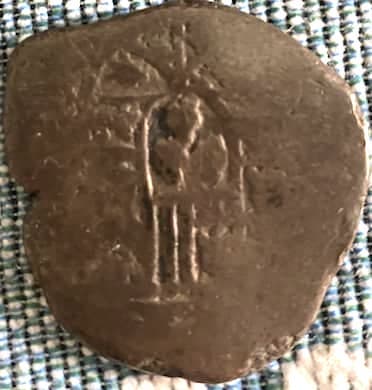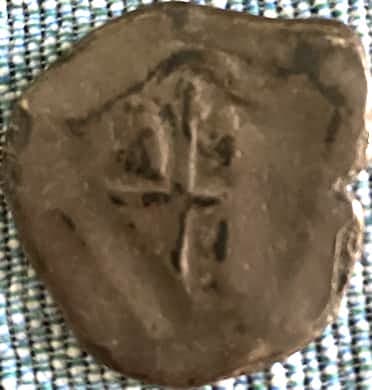
-----
How to determine what metal medallion is made of?
Q. Hi my name is Querube and I have had this for 35 years and do not know what it is -- can anyone help me?


- New Bern [North Carolina]
January 18, 2022
A. Hi Querube. That's a tall order. If you tell us where you got it and what it appears to be made of (copper, stone, etc.), and about how big it is, it might still be a tall order, but maybe not quite so unlikely :-)
Luck & Regards,

Ted Mooney, P.E. RET
Striving to live Aloha
finishing.com - Pine Beach, New Jersey
Ted is available for instant help
or longer-term assistance.
January 2022
⇩ Related postings, oldest first ⇩
Q. One of my students found a small medallion with pictures of sea life on it buried in the ground. It has turned green in certain spots and I thought it was copper or brass. I tried to weight it with a cheap balance scale and find the volume but had to use a large graduated cylinder so it was difficult to get an accurate measurement. The mass is approximately 54 grams and the volume was about 15 ml. It is about 6 cm in diameter and less than 5 mm thick. If you could suggest what it might be or a better way to try to figure it out, my student and I would appreciate it. Thanks! Otherwise, at least the process proved to be a good lesson in trying to find an unknown substance through finding out its density.
Dena Dusek- East Islip, New York
2003
A. You came up with a specific gravity of 54/15, or 3.6. The specific gravity of copper is 8.89, and that of tin and zinc are in the low 7's. So any brass, bronze, or copper alloy should have a specific gravity at least twice what you determined. The specific gravity of aluminum is 2.7, so that'a a possibility if your scale read high. Considering the presumably yellow color and the green discoloration, however, aluminum doesn't sound likely. I'd say a good experiment might be to use a chunk of material of known or knowable specific gravity and volume to calibrate your experiment. You'd need a much much more accurate specific gravity in order to use it as a piece of the puzzle. There are many chemical "spot tests" to help determine materials, but they tend to be destructive tests.

Ted Mooney, P.E.
Striving to live Aloha
finishing.com - Pine Beach, New Jersey
Ted is available for instant help
or longer-term assistance.
2003
A. Density might not work since a number of medallions of the type mentioned were stamped out or cast in two pieces and then joined, i.e., slightly hollow. A second possibility is that it was cast out of aluminum and plated quite heavily with copper and then a brass top coat or a very low alloy gold.
James Watts- Navarre, Florida
2003
Q, A, or Comment on THIS thread -or- Start a NEW Thread